Islamic Financial Market Size
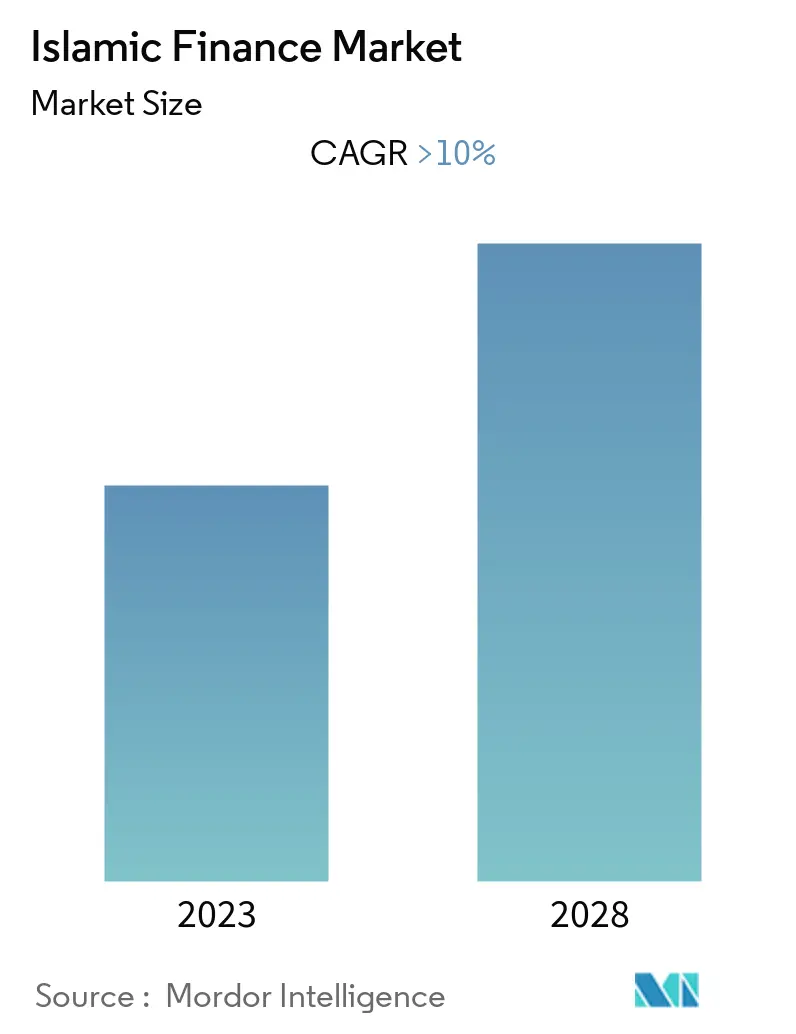
| Study Period | 2019-2028 |
| Base Year For Estimation | 2022 |
| CAGR | > 10.00 % |
| Fastest Growing Market | Asia Pacific |
| Largest Market | Middle East and Africa |
| Market Concentration | Low |
Major Players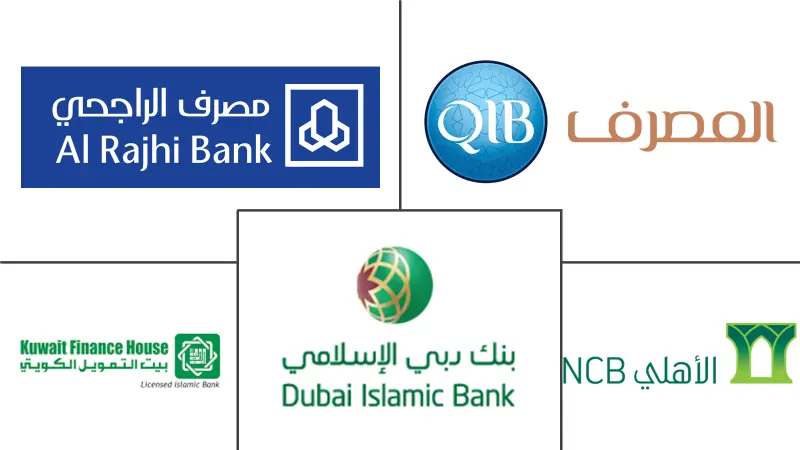
*Disclaimer: Major Players sorted in no particular order |
Need a report that reflects how COVID-19 has impacted this market and its growth?
Islamic Financial Market Analysis
The Islamic finance market has achieved a market size of about 4.2 trillion USD for the current year and is poised to register a CAGR of 10% during the forecast period. The Islamic finance industry reached almost USD 4 trillion in 2021, with a growth rate of 17%, up from 14% in 2020. In 2021, the total net income reported by Islamic financial institutions around the world went from USD 10.5 billion in 2020 to USD 32 billion. This shows that things are getting better, especially for Islamic banks.
The Islamic finance industry had another tough year, with many markets slowly getting back up to speed and countries reopening their economies. But new waves of the COVID-19 virus, first the Delta variant and then the Omicron variant, stopped the progress. The new COVID-19 waves caused new lockdowns or safety measures, which again messed up global supply chains and made it more expensive to move things. The year 2021 ended on a better note because most countries were able to loosen their pandemic-related rules because they had high vaccination rates. Because of this, the world's demand for oil went up faster than it could be made, since OPEC+ production limits were locked in by an agreement signed in late 2020. Consequently, crude oil prices increased in 2021, with the spot prices of Brent and West Texas Intermediate (WTI) crude oil closing the year at USD 77.78 and USD 75.21, respectively, up from USD 51.09 and USD 47.62 at the start of January. This eased budgetary pressures on the GCC economies that depend on oil revenues.
Islamic Financial Market Trends
Large-scale growth drivers moving forward
Islamic finance, several large-scale national plans, and roadmaps will give the industry a boost. These include Afghanistan, Brunei, Indonesia, Kazakhstan, Labuan, Malaysia, Oman, Pakistan, and Saudi Arabia. Key developments across North Africa, where Islamic banking and takaful are gaining traction and growth, will also contribute to the expansion of Islamic finance moving forward. The other region to look out for is Central Asia, where countries like Tajikistan, one of the fastest-growing Islamic banking markets in 2021, will also kickstart its takaful sector. Kazakhstan is also fast expanding its Islamic finance industry with strong growth in other Islamic financial institutions, especially FinTechs. Overall, IFDI projects the global Islamic finance industry to grow to USD 5.9 trillion by 2026 from USD 4 trillion in 2021, mainly driven by its two biggest segments, Islamic banks and Sukuk.
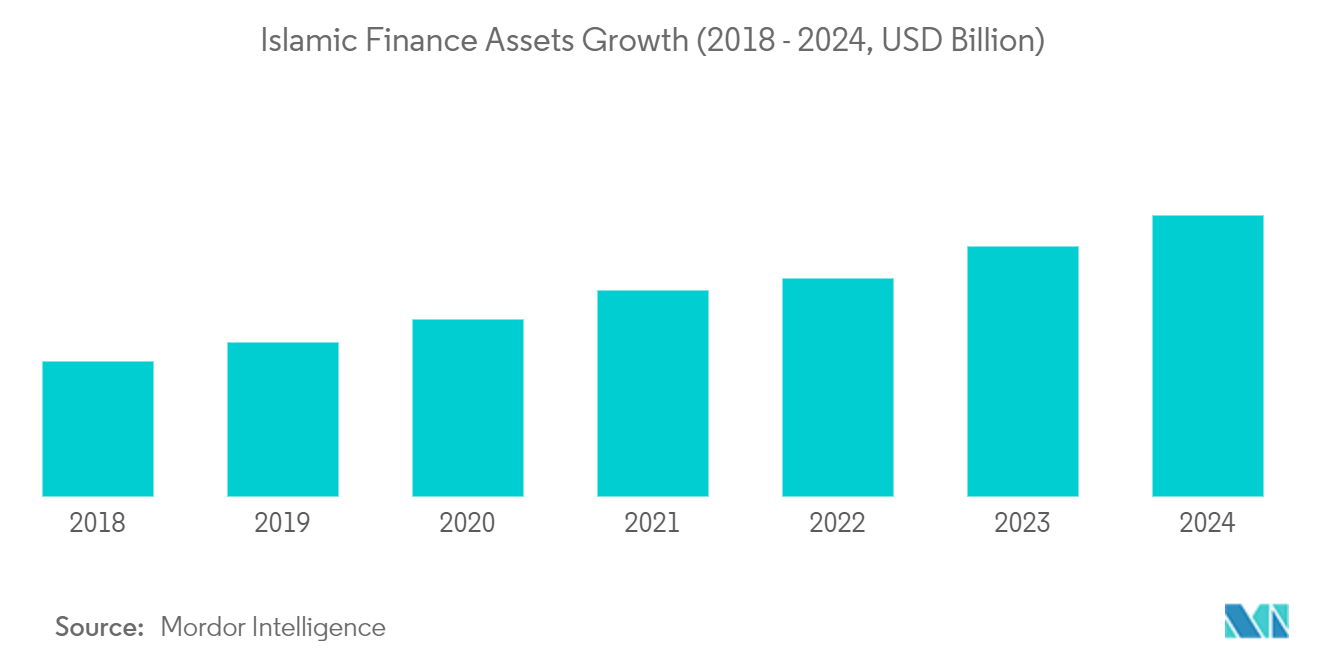
Takaful is responding to fierce competition from conventional insurance
The takaful industry is the smallest part of Islamic finance. It is only worth US$73 billion, or 2% of all Islamic finance assets around the world.The sector hit double-digit growth of 17% in 2021, a single percent higher than the year before. In places like the GCC, there is a lot of competition between companies that follow Islamic law and those that don't.The rise in medical and auto claims in markets like Saudi Arabia, where many takaful operators reported losses, is one thing that is making the market more competitive.The takaful sector is undergoing consolidation.
Most recently, in July 2022, Dar Al Takaful and Watania, both based in the United Arab Emirates, merged to become one of the largest insurance companies in a market that is very fragmented. Mergers and consolidations will reduce operators’ fixed costs. In Saudi Arabia, SABB Takaful and Walaa Insurance received the regulator’s nod in August 2022 to merge. However, Enaya's shareholders rejected the proposal to combine Enaya and Amana. In Bahrain, Solidarity completed its merger with T’azur in January 2022.
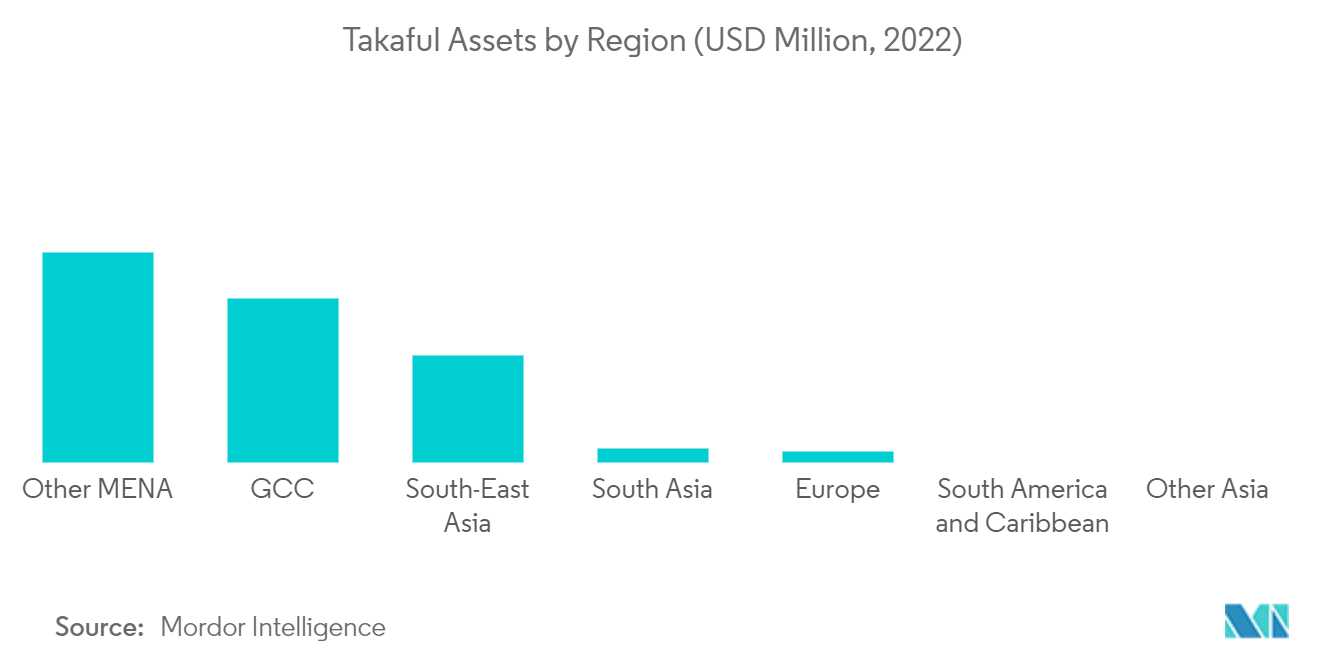
Islamic Financial Industry Overview
The Islamic finance market is fragmented, with a large number of players trying to grab a significant chunk of the developing market. In some regions, like Asia and Africa, it is moderately growing with the presence of a large number of local players and some major players. However, the GCC is a highly competitive market with a large number of international players. Bank Al-Rajhi, Dubai Islamic Bank, and Kuwait House Finance are among the major players present in the region.
Islamic Financial Market Leaders
Bank Al-Rajhi
Dubai Islamic Bank
Kuwait Finance House
Bank Mellat Iran
Bank Meli Iran
Abu Dhabi Islamic Bank
*Disclaimer: Major Players sorted in no particular order
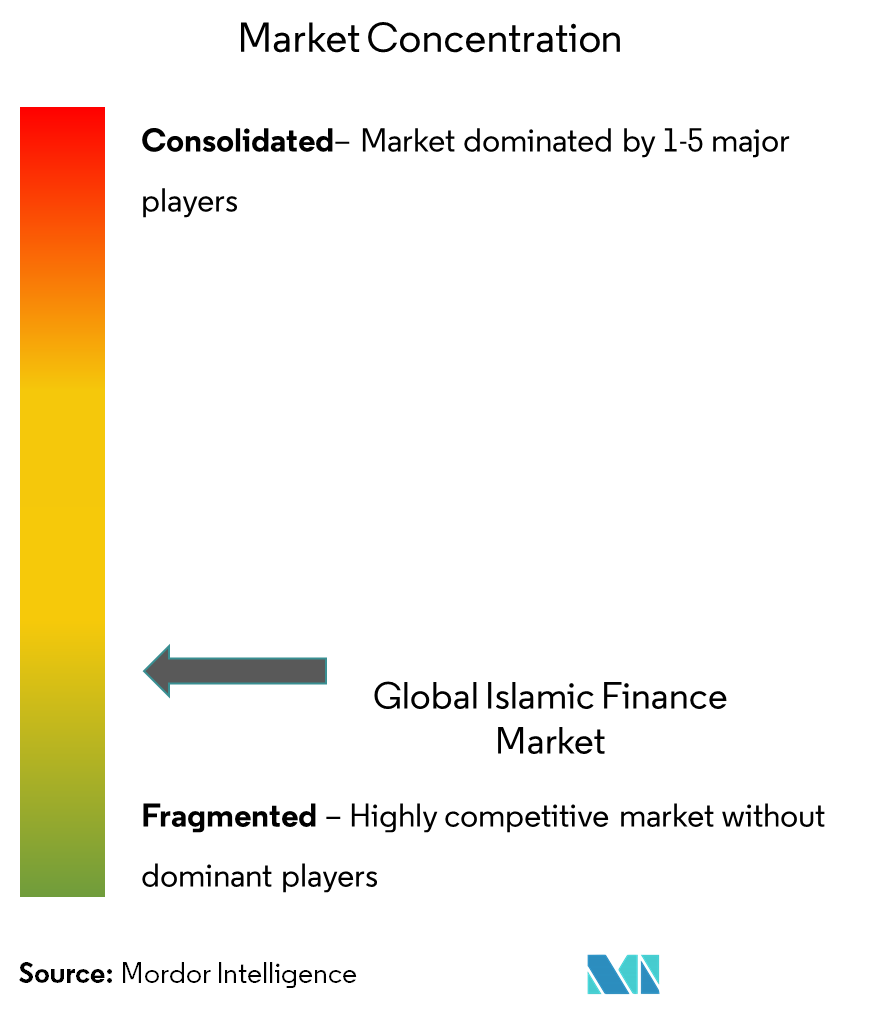
Islamic Financial Market News
- January 2023: Abu Dhabi Islamic Bank (ADIB) has increased its ownership in ADIB Egypt to more than 52%. The UAE-based bank has acquired 9.6 million shares from the National Investment Bank (NIB), representing 2.4% of ADIB Egypt’s share capital, the bank told the Abu Dhabi Securities Exchange (ADX). The deal has raised ADIB UAE’s ownership in the Egyptian unit to 52.607%.
- July 2022: The Islamic banking group Kuwait Finance House (KFH) has agreed to buy Bahrain-based peer Ahli United Bank (AUB) through a share swap deal. With 115 billion USD in assets, the new bank is expected to be the seventh largest in the Gulf region. According to the revised terms, the Kuwaiti lender will offer one share for every 2.695 shares of Ahli United, implying an offer price of USD 1.04 per share.
Islamic Financial Market Report - Table of Contents
1. INTRODUCTION
1.1 Study Deliverables
1.2 Study Assumptions
1.3 Scope of the Study
2. RESEARCH METHODOLOGY
3. EXECUTIVE SUMMARY
4. MARKET INSIGHTS AND DYNAMICS
4.1 Market Overview
4.1.1 Insights on Top Islamic Finance Development Indicator (IFDI) Market
4.1.2 Insights on Countries with Highest Islamic Finance Assets
4.1.3 Insights on Countries with Highest Islamic Banking Assets
4.1.4 Insights on Islamic Insurance Growth
4.1.5 Insights on Regulatory Requirement of Islamic Finance
4.2 Market Drivers
4.3 Market Restraints
4.4 Porter's Five Forces Analysis
4.4.1 Bargaining Power of Buyers/Consumers
4.4.2 Bargaining Power of Suppliers
4.4.3 Threat of New Entrants
4.4.4 Threat of Substitute Products
4.4.5 Intensity of Competitive Rivalry
4.5 Impact of COVID-19 on the Market
5. MARKET SEGMENTATION
5.1 By Financial Sector
5.1.1 Islamic Banking
5.1.2 Islamic Insurance : Takaful
5.1.3 Islamic Bonds 'Sukuk'
5.1.4 Other Islamic Financial Institution (OIFI's)
5.1.5 Islamic Funds
5.2 By Geography
5.2.1 GCC
5.2.1.1 Saudi Arabia
5.2.1.2 UAE
5.2.1.3 Qatar
5.2.1.4 Kuwait
5.2.1.5 Bahrain
5.2.1.6 Oman
5.2.2 MENA
5.2.2.1 Iran
5.2.2.2 Egypt
5.2.2.3 Rest of Middle East & North Africa
5.2.3 Southeast Asia & Asia-Pacific
5.2.3.1 Malaysia
5.2.3.2 Indonesia
5.2.3.3 Brunei
5.2.3.4 Pakistan
5.2.3.5 Rest of Southeast Asia and Asia-Pacific
5.2.4 Europe
5.2.4.1 United Kingdom
5.2.4.2 Ieland
5.2.4.3 Italy
5.2.4.4 Rest of Europe
5.2.5 Rest of the World
6. COMPETITIVE LANDSCAPE
6.1 Market Concetration Overview
6.2 Company Profiles
6.2.1 Dubai Islamic Bank
6.2.2 National Commercial Bank Saudi Arabia
6.2.3 Bank Mellat Iran
6.2.4 Bank Melli Iran
6.2.5 Kuwait Finance House
6.2.6 Bank Maskan Iran
6.2.7 Qatar Islamic Bank
6.2.8 Abu Dhabi Islamic Bank
6.2.9 May Bank Islamic
6.2.10 CIMB Islamic Bank*
- *List Not Exhaustive
7. MARKET OPPORTUNITIES AND FUTURE TRENDS
8. DISCLAIMER AND ABOUT US
Islamic Financial Industry Segmentation
Islamic finance started 50 years ago in countries with many Muslims who wanted to ensure that their money sources followed Shariah and other Islamic principles. Islamic Banking, Islamic Insurance (Takaful), Other Islamic Financial Institutions (OIFLs), Islamic Bonds (Sukuk), and Islamic Funds are all different parts of the global Islamic finance market. By geographic region, the Islamic Finance market can be segmented into the Gulf Cooperation Council (Saudi Arabia, Kuwait, UAE, Qatar, Bahrain, and Oman), the Middle East and North Africa (Iran, Egypt, and the Rest of MENA), South Asia and Asia-Pacific (Malaysia, Indonesia, Brunei, Pakistan, and the Rest of South Asia and Asia-Pacific), Europe (the United Kingdom, Ireland, Italy, and the Rest of Europe), and the Rest of the World. The report also gives a complete background analysis of the global Islamic finance market, including analysis and forecast of market size, market segments, industry trends, and growth drivers. The report offers market size and forecasts for the Islamic Finance Market in value (USD billion) for all the above segments.
| By Financial Sector | |
| Islamic Banking | |
| Islamic Insurance : Takaful | |
| Islamic Bonds 'Sukuk' | |
| Other Islamic Financial Institution (OIFI's) | |
| Islamic Funds |
| By Geography | ||||||||
| ||||||||
| ||||||||
| ||||||||
| ||||||||
| Rest of the World |
Islamic Financial Market Research FAQs
What is the current Islamic Finance Market size?
The Islamic Finance Market is projected to register a CAGR of greater than 10% during the forecast period (2023-2028).
Who are the key players in Islamic Finance Market?
Bank Al-Rajhi, Dubai Islamic Bank, Kuwait Finance House, Bank Mellat Iran, Bank Meli Iran and Abu Dhabi Islamic Bank are the major companies operating in the Islamic Finance Market.
Which is the fastest growing region in Islamic Finance Market?
Asia Pacific is estimated to grow at the highest CAGR over the forecast period (2023-2028).
Which region has the biggest share in Islamic Finance Market?
In 2023, the Middle East and Africa accounts for the largest market share in the Islamic Finance Market.
Islamic Banking Industry Report
Statistics for the 2023 Islamic Banking market share, size and revenue growth rate, created by Mordor Intelligence™ Industry Reports. Islamic Banking analysis includes a market forecast outlook to 2028 and historical overview. Get a sample of this industry analysis as a free report PDF download.
